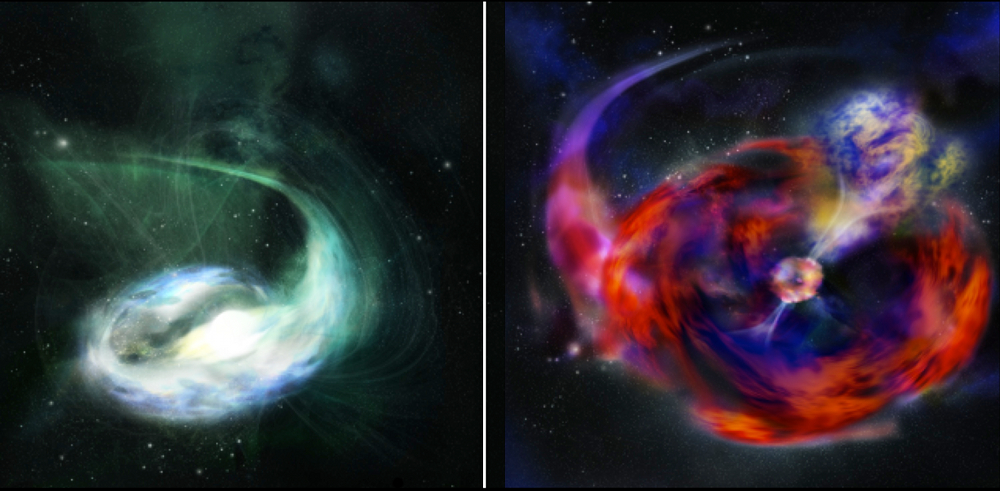
 Credit: Sergio Campana; Christina Thoene; Swift Team; NASA/Goddard's Science Visualization Studio
Credit: Sergio Campana; Christina Thoene; Swift Team; NASA/Goddard's Science Visualization Studio
Neutron Star of Wonder
One Christmas day, not too long ago, a group of wise men and women, using NASA's Swift Gamma-ray Burst hunter, followed the rapid brightening and fading of an unusual star. This event, a Gamma-ray burst known as GRB 101225A, was rather startling. Gamma-ray bursts are the most extreme stellar explosions in the Universe, and are believed to involve the death of an extremely massive star. Most GRBs are observed to last only a few minutes or less. GRB 101225A was strange since it lasted a full 28 minutes. This "long duration burst" left astronomers to wonder: how could a stellar explosion possibly last so long? Two competing ideas were soon postulated. Both involve neutron stars, the dead remnant of the core of an extremely massive star. One idea, represented by the artist's conception on the left, involves the collision and accretion of a comet onto the surface of a nearby neutron star. The other, shown by the artist's conception on the right, involves a neutron star being swallowed up in the extended atmosphere of a red giant companion star. Astronomers are hoping to resolve this riddle by locating the birthplace of the event.
Published: December 26, 2011
<
HEA Dictionary ● Archive
● Search HEAPOW
● Other Languages
● HEAPOW on Facebook
● Download all Images
● Education ● HEAD
>

Each week the HEASARC
brings you new, exciting and beautiful images from X-ray and Gamma ray
astronomy. Check back each week and be sure to check out the HEAPOW archive!
Page Author: Dr. Michael F. Corcoran
Last modified Tuesday, 27-Feb-2024 10:15:15 EST


